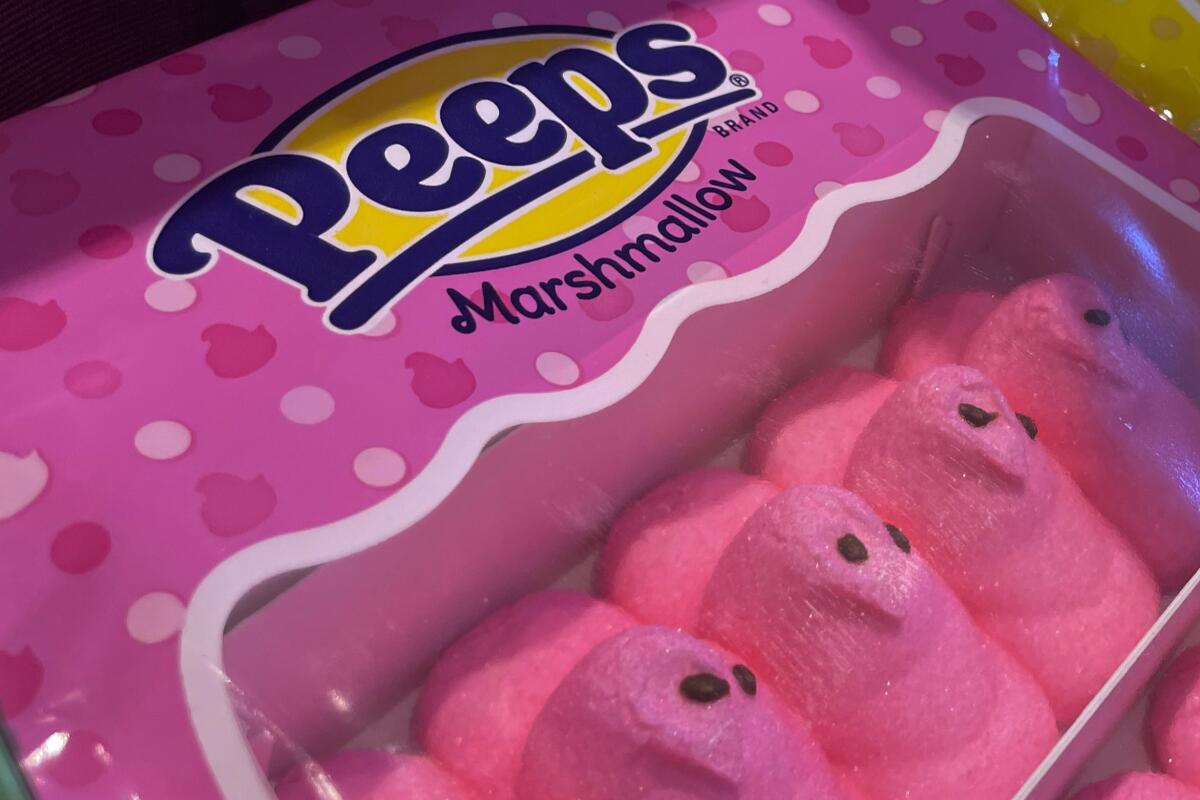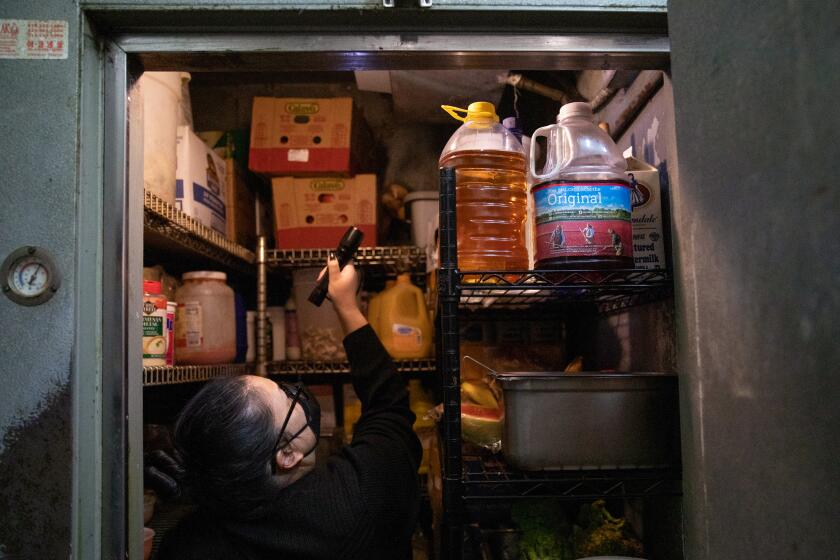California didn’t ban Skittles. But it tackled a food safety problem the FDA hasn’t solved

- Share via
Last month, Gov. Gavin Newsom signed into law California’s Food Safety Act banning four ingredients that are linked to health risks. These substances — red dye no. 3, propyl paraben, brominated vegetable oil and potassium bromate, currently found in some candies, sodas and baked goods — will not be allowed in the state’s foods starting in 2027. All four are banned from foods in the European Union (which only allows red no. 3 in candied and cocktail cherries), but, California aside, they remain perfectly legal in the U.S.
New York is considering a similar law that would also ban a fifth substance previously included in California’s law — titanium dioxide, which is used in Skittles. That’s why the California measure got dubbed the “Skittles ban” (a name that stuck even after titanium dioxide was cut from the draft).
California is the first state to go beyond Food and Drug Administration regulations by banning the other four additives. Should it have deferred to the FDA?
After the upcoming Easter season, Peeps will no longer contain red dye No. 3, which has been banned for use in food in California starting in 2027.
The challenges facing the FDA make the case for state action. Sluggish and irregular safety reviews, a fast-track ingredient approval loophole that is abused by manufacturers, and a focus on acute food poisoning over long-term diet all hinder the agency’s ability to address the growing risks associated with our food supply.
The FDA is required to review the safety of any new food additive and grant approval before it can be used. If evidence indicates that an additive is unsafe, the FDA is supposed to decline or limit its use. Three of the substances in California’s law were approved by this standard review: potassium bromate, Red Dye No. 3 and brominated vegetable oil. But the FDA is reevaluating the safety of the latter two and has proposed, though not finalized, a rule to ban brominated vegetable oil from the food supply.
The fourth substance set to be banned in California, propyl paraben, was approved through what’s effectively a loophole in the FDA system. Ingredients classified as “generally recognized as safe” (GRAS) are exempt from the additive category and thus from careful FDA review. Congress crafted this exemption to be used infrequently, primarily to keep common ingredients like salt and spices on the market without an onerous approval process. But as food companies sought to avoid the rigorous food additive review, GRAS applications piled up.
‘Sell by,’ ‘best by’ and similar labels cause consumers to throw away good food, generating waste that exacerbates climate change. The Legislature can help.
Without the resources to research the applications, and lacking further support from Congress, the FDA allowed manufacturers to skip the application and determine GRAS status with only a “voluntary notification process.” This means companies can choose whether to let the FDA know they believe their substance is GRAS — in which case FDA can affirm that decision — or they can self-affirm GRAS status and market the substance without ever notifying the FDA. Thousands of substances have entered the food supply this way. Even when companies voluntarily notify, as was the case for propyl paraben in 1984, the FDA does not conduct a full safety review to affirm GRAS status.
Since GRAS notification is voluntary, the FDA does not know all the substances in our food supply. One study found that of the 4,284 GRAS determinations made as of January 2011, just 582 were cleared through the FDA’s voluntary notification process.
Although the FDA has the authority to revoke GRAS status or an additive approval, the agency reviews the safety of greenlighted ingredients sporadically, rather than regularly — and often slowly.
Every day a health inspector makes an unannounced visit at restaurants throughout Los Angeles County. What does it take to pass an inspection? Who makes up the rules and why? It’s a job facing high vacancy rates — but someone has to do it.
Take for example, trans fat from partially hydrogenated oils, a GRAS substance used for decades in commercial baked goods and other products. A 2004 citizen petition asked the FDA to look into the safety of these oils, but it wasn’t until 2015 that the FDA determined that they were not GRAS and banned them in food starting in 2020. By the time the FDA got around to this, New York City had already banned them in restaurants (in 2006), as had California (in 2008).
The under-regulation of food additives is part of a larger challenge. FDA vetting focuses more on acute risks, such as food-borne illness, than on longer-term risks from diet. Of the agency’s more than $1 billion budget for its foods program, only 7% goes to nutrition and labeling, its major strategies to address diet-related disease. Yet while foodborne illness causes about 3,000 deaths per year, 1.5 million deaths in 2018 — more than half of all deaths that year — resulted from conditions linked to diet.
But states moving to ban substances isn’t a perfect solution either. They generally don’t have the resources to conduct comprehensive safety reviews, and it would be more efficient to beef up the FDA’s infrastructure than to duplicate costly systems across states and potentially create a confusing patchwork of bans.
We desperately need change at the federal level. The Government Accountability Office reported on flaws in the GRAS system in 2010, and the FDA has not addressed the majority of the recommendations, such as regularly reviewing the safety of GRAS substances and requiring companies to provide basic information about these substances. The FDA urgently needs additional Congressional funding to take action on food safety for all ingredients, with a particular eye toward diet-related chronic disease.
In the meantime, states like California will have to keep taking the lead on evaluating harmful ingredients and show the federal government how it can be done.
Emily Broad Leib is a clinical professor of law at Harvard Law School and faculty director of the school’s Food Law and Policy Clinic.
More to Read
A cure for the common opinion
Get thought-provoking perspectives with our weekly newsletter.
You may occasionally receive promotional content from the Los Angeles Times.












